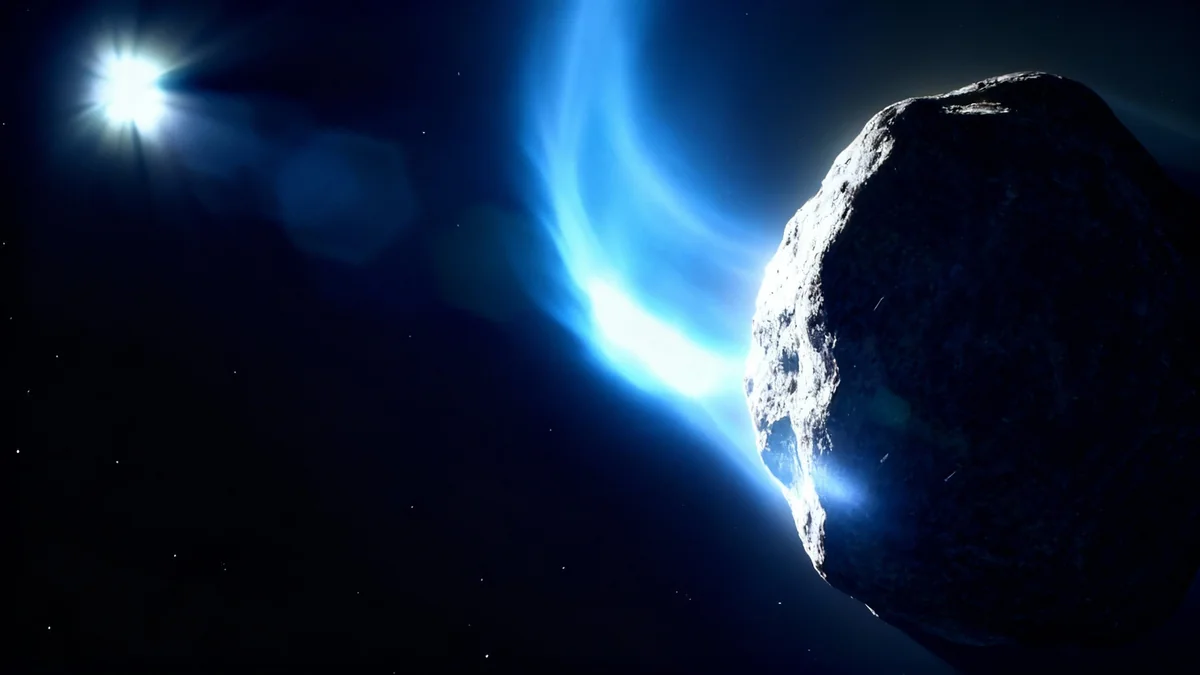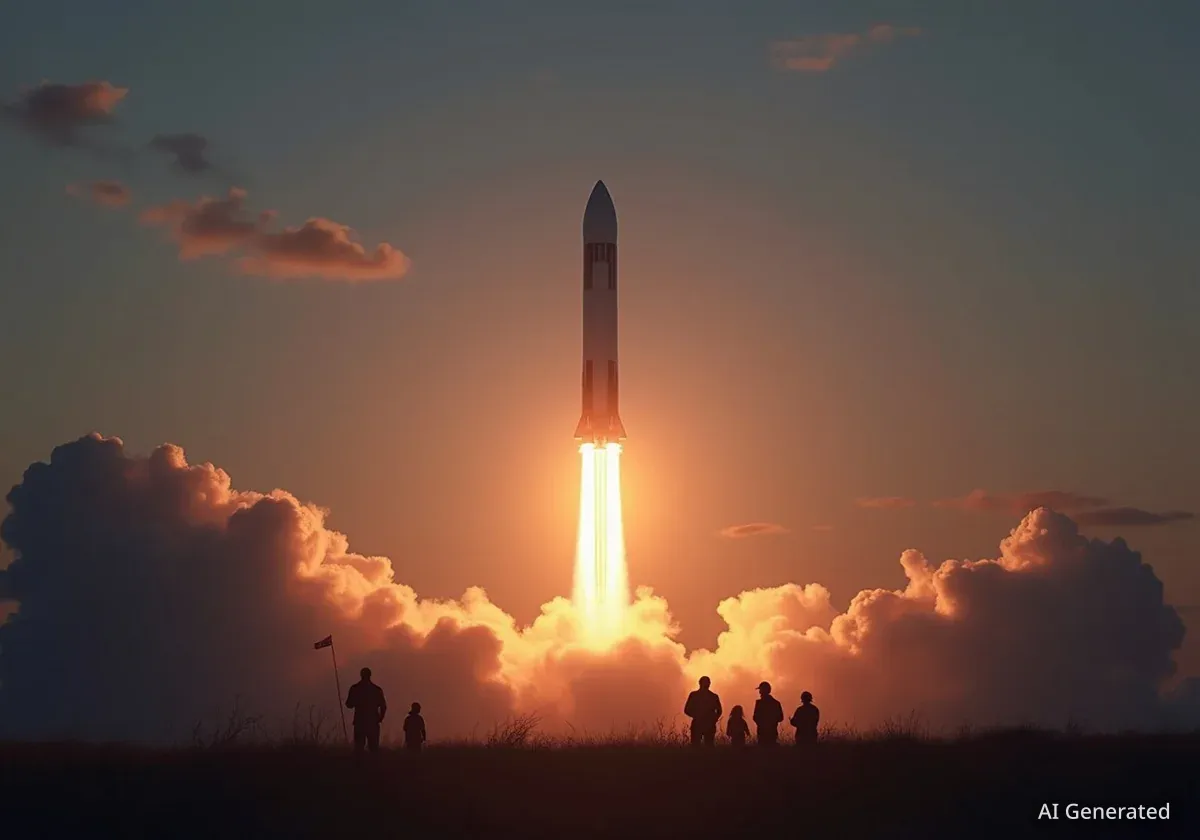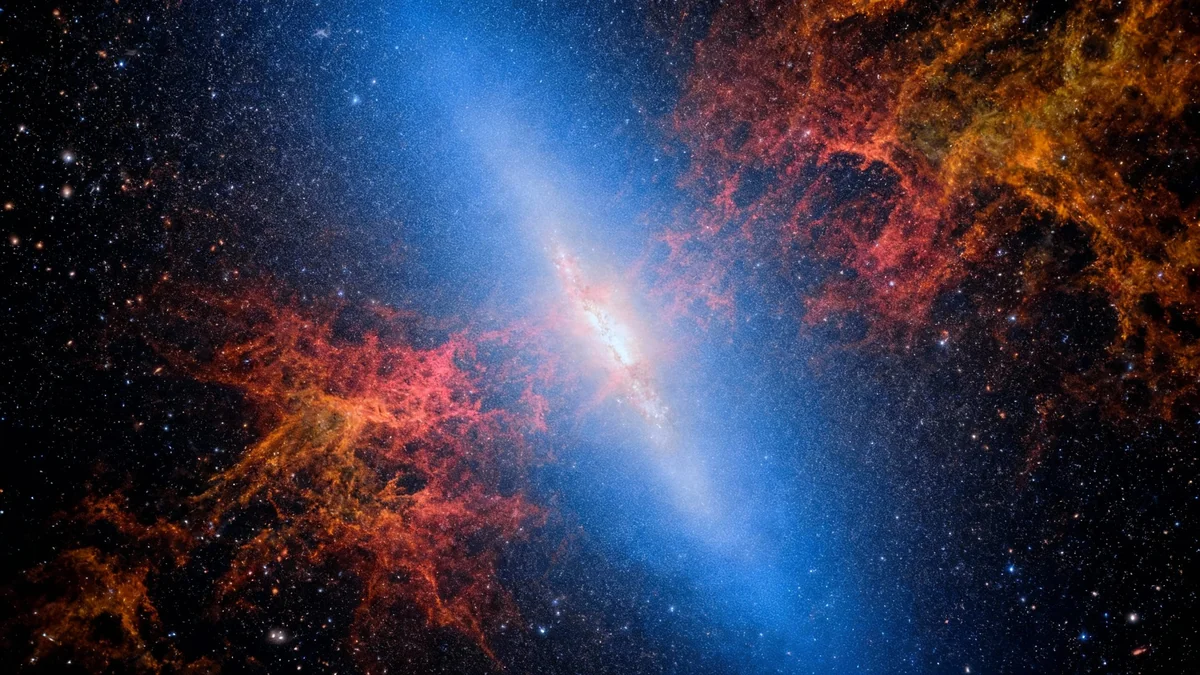A new study proposes a four-spacecraft fleet called the Space Weather Investigation Frontier (SWIFT) designed to improve warnings for potentially damaging solar events. According to researchers, the system could speed up space weather alerts by as much as 40 percent.
The proposal, detailed in the peer-reviewed Astrophysical Journal, outlines a mission to detect elusive plasma structures, sometimes called 'space tornadoes,' that pose a threat to Earth's satellites and power grids. The study was funded by NASA and the National Science Foundation.
Key Takeaways
- Researchers have proposed a four-spacecraft mission named SWIFT to enhance space weather prediction.
- The system aims to provide warnings 40% faster than current methods allow.
- SWIFT is designed to detect dangerous plasma vortices, known as flux ropes, which can be missed by existing sun-gazing satellites.
- One of the four spacecraft would utilize a large solar sail to maintain a unique observation point closer to the sun.
The Challenge of Predicting Space Weather
The sun is currently in a highly active phase of its 11-year cycle, leading to an increase in solar flares and coronal mass ejections (CMEs). These events release massive amounts of charged particles into space, creating what is known as space weather.
When these particles reach Earth, they can interact with our planet's magnetic field, or magnetosphere. This interaction can have significant consequences for modern technology.
The Threat of Geomagnetic Storms
Powerful solar storms can induce electrical currents in power lines, potentially causing widespread blackouts. A notable example occurred in March 1989, when a solar storm caused a power failure across the entire province of Quebec, Canada. These storms also pose a risk to orbiting satellites, which are critical for communication, navigation, and scientific research.
Limitations of Current Monitoring Systems
Space agencies like NASA and the European Space Agency currently operate spacecraft at a gravitationally stable location between the Earth and the sun known as Lagrange Point 1 (L1). This position provides a constant view of the sun.
However, these single-point observation posts have limitations. According to the University of Michigan, which led the new study, they can fail to detect certain dangerous solar phenomena. Specifically, they can miss vortices with southward-pointing magnetic fields that are directed toward Earth.
"Our simulation shows that the magnetic field in these vortices can be strong enough to trigger a geomagnetic storm and cause some real trouble," stated Chip Manchester, the study's lead author and a research professor at the university.
Introducing the SWIFT Constellation
The SWIFT proposal aims to overcome these limitations by using a constellation of four spacecraft working in tandem. This multi-point observation system would provide a more comprehensive view of the solar wind as it travels toward Earth.
A Pyramid in Space
The four spacecraft would be arranged in a pyramid formation. Three conventionally fueled spacecraft would form the base of the pyramid, positioned around the L1 point. Each side of this triangular base would measure approximately 200,000 miles (322,000 km), which is nearly the distance from the Earth to the moon.
The fourth spacecraft would serve as the mission's hub, positioned at the pyramid's apex, beyond L1 and closer to the sun. This unique vantage point would allow it to detect solar events earlier than the other spacecraft.
What Are 'Space Tornadoes'?
The phenomena SWIFT is designed to detect are technically called "flux ropes." These are spinning masses of plasma ejected from the sun. They form when a fast-moving CME plows through the slower-moving solar wind. These structures can be vast, ranging from 3,000 miles (4,828 km) to 6 million miles (9.5 million km) in size.
Advanced Technology for a Unique Orbit
Maintaining the fourth spacecraft's position beyond L1 is a significant engineering challenge. The location is gravitationally unstable, meaning a spacecraft would require constant thrust to stay in place, quickly depleting conventional fuel reserves.
Harnessing the Power of the Sun
To solve this problem, the SWIFT proposal includes an innovative solution: a massive solar sail. This sail, made of a thin, reflective material like aluminum, would be roughly one-third the size of a football field.
The sail would capture photons—particles of light from the sun—to generate a continuous, gentle push. According to the proposal, this constant pressure would be sufficient to counteract gravitational forces and maintain the spacecraft's orbit without burning fuel.
This solar sail technology is not entirely new. Its success depends on a predecessor mission called Solar Cruiser, which NOAA and NASA plan to launch as a rideshare in 2029.
The Future of Space Weather Forecasting
The SWIFT mission is currently a concept and has not been funded or formally designed. There is no timeline for its potential launch or an estimate of its cost. However, the study provides a detailed blueprint for how such a system could revolutionize our ability to prepare for solar storms.
By placing a hub spacecraft closer to the sun and using a multi-point system to track solar wind changes, SWIFT could significantly improve warning times. This 40% increase in lead time would give power grid operators, satellite controllers, and other critical infrastructure managers more time to take protective measures.
As our reliance on technology continues to grow, the importance of accurate and timely space weather forecasting becomes ever more critical. Projects like SWIFT represent a forward-looking approach to mitigating the risks posed by our active sun.





